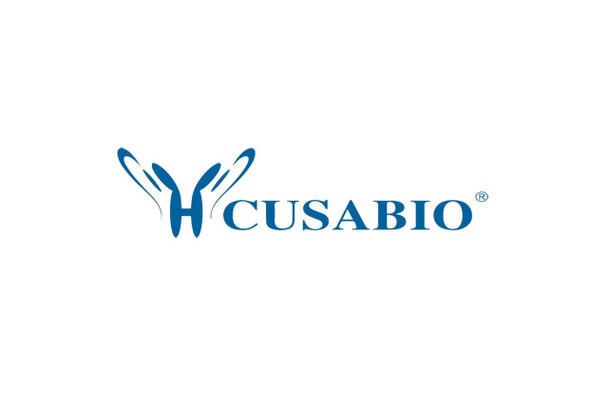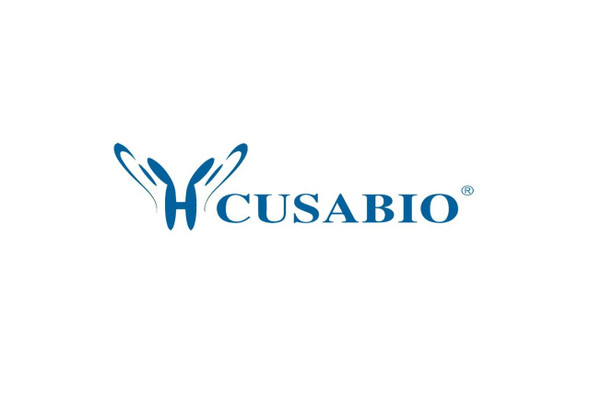Cusabio Drosophila melanogaster Recombinants
Recombinant Drosophila melanogaster General odorant-binding protein lush (lush) | CSB-EP517298DLU
- SKU:
- CSB-EP517298DLU
- Availability:
- 13 - 23 Working Days
Description
Recombinant Drosophila melanogaster General odorant-binding protein lush (lush) | CSB-EP517298DLU | Cusabio
Alternative Name(s): lush; Obp76a; Obp76c; CG8807; General odorant-binding protein lush
Gene Names: lush
Research Areas: Others
Organism: Drosophila melanogaster (Fruit fly)
AA Sequence: MTMEQFLTSLDMIRSGCAPKFKLKTEDLDRLRVGDFNFPPSQDLMCYTKCVSLMAGTVNKKGEFNAPKALAQLPHLVPPEMMEMSRKSVEACRDTHKQFKESCERVYQTAKCFSENADGQFMWP
Source: E.coli
Tag Info: N-terminal 10xHis-tagged and C-terminal Myc-tagged
Expression Region: 30-153aa
Sequence Info: Full Length of Mature Protein
MW: 19.2 kDa
Purity: Greater than 90% as determined by SDS-PAGE.
Relevance: Odorant-binding protein required for olfactory behavior and for activity of pheromone-sensitive neurons. Binds to alcohols and mediates avoidance behavior to high concentrations of alcohols, the alcohol-binding possibly resulting in activation of receptors on T2B neurons, the activation of these receptors inhibiting these neurons. Acts in concert with Snmp and lush to capture cVA molecules on the surface of Or67d expressing olfactory dendrites and facilitate their transfer to the odorant-receptor Orco complex. Required for cVA response, probably by binding to VA. May act by serving as an adapter that bridges the presence of gaseous pheromone molecules, cVA, to activation of specific neuronal receptors expressed on T1 olfactory neurons, possibly via a specific conformational change induced by cVA that in turn activates T1 receptors. T1 neurons are excited by the pheromone VA, while T2 neurons are inhibited by alcohols. Also binds to phthalates.
Reference: "LUSH odorant-binding protein mediates chemosensory responses to alcohols in Drosophila melanogaster." Kim M.-S., Repp A., Smith D.P. Genetics 150:711-721(1998)
Storage: The shelf life is related to many factors, storage state, buffer ingredients, storage temperature and the stability of the protein itself. Generally, the shelf life of liquid form is 6 months at -20?/-80?. The shelf life of lyophilized form is 12 months at -20?/-80?.
Notes: Repeated freezing and thawing is not recommended. Store working aliquots at 4? for up to one week.
Function: Odorant-binding protein required for olfactory behavior and for activity of pheromone-sensitive neurons. Binds to alcohols and mediates avoidance behavior to high concentrations of alcohols, the alcohol-binding possibly resulting in activation of receptors on T2B neurons, the activation of these receptors inhibiting these neurons. Acts in concert with Snmp and lush to capture cVA molecules on the surface of Or67d expressing olfactory dendrites and facilitate their transfer to the odorant-receptor Orco complex. Required for cVA response, probably by binding to VA. May act by serving as an adapter that bridges the presence of gaseous pheromone molecules, cVA, to activation of specific neuronal receptors expressed on T1 olfactory neurons, possibly via a specific conformational change induced by cVA that in turn activates T1 receptors. T1 neurons are excited by the pheromone VA, while T2 neurons are inhibited by alcohols. Also binds to phthalates.
Involvement in disease:
Subcellular Location: Secreted
Protein Families: PBP/GOBP family
Tissue Specificity: Specifically expressed in chemosensory system in both males and females. Expressed in a subset of trichoid chemosensory sensilla located on the ventral-lateral surface of the third antennal segment. Secreted from non-neuronal support cells into the sensillum lymph that bathes the olfactory neurons within these sensilla.
Paythway:
Form: Liquid or Lyophilized powder
Buffer: If the delivery form is liquid, the default storage buffer is Tris/PBS-based buffer, 5%-50% glycerol. If the delivery form is lyophilized powder, the buffer before lyophilization is Tris/PBS-based buffer, 6% Trehalose, pH 8.0.
Reconstitution: We recommend that this vial be briefly centrifuged prior to opening to bring the contents to the bottom. Please reconstitute protein in deionized sterile water to a concentration of 0.1-1.0 mg/mL.We recommend to add 5-50% of glycerol (final concentration) and aliquot for long-term storage at -20?/-80?. Our default final concentration of glycerol is 50%. Customers could use it as reference.
Uniprot ID: O02372
HGNC Database Link: N/A
UniGene Database Link: UniGene
KEGG Database Link: KEGG
STRING Database Link: STRING
OMIM Database Link: N/A









